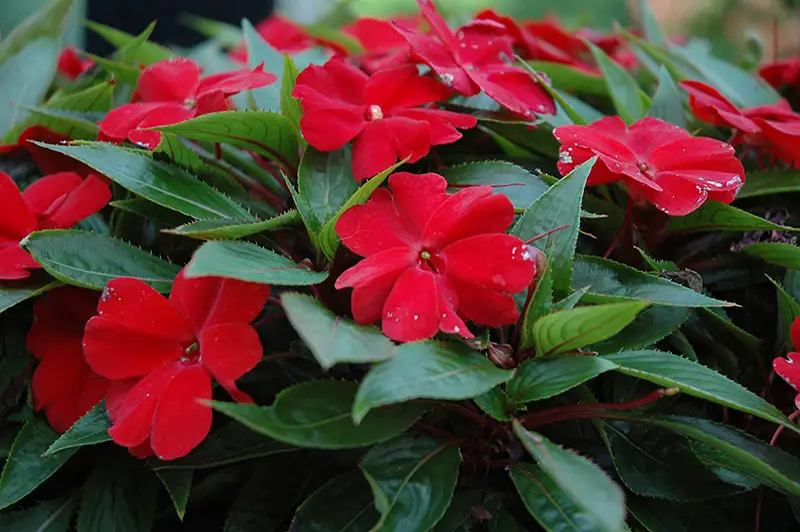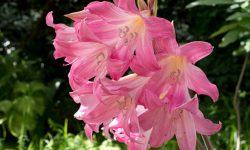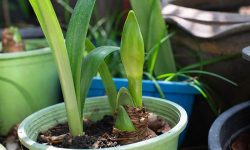Impatiens are a favorite among gardeners for their vibrant blooms and ability to brighten shady areas. Their cheerful flowers appear in a wide range of colors, adding instant charm to garden beds, containers, and hanging baskets. Propagating impatiens allows gardeners to multiply these beautiful plants without constantly purchasing new ones. By learning the proper techniques, you can expand your garden efficiently and enjoy continuous color throughout the growing season.
Propagation also offers an opportunity to experiment with different varieties and maintain healthy, vigorous plants. Gardeners who propagate impatiens from cuttings or seeds gain control over plant quality and growth conditions. Understanding the ideal timing, tools, and methods for propagation ensures higher success rates. This guide provides detailed, practical instructions to help both beginners and experienced gardeners propagate impatiens confidently, achieving lush, thriving garden displays year after year.
Choosing the Right Impatiens for Propagation

Selecting the best impatiens for propagation is crucial for success. Healthy parent plants produce stronger, more vigorous cuttings or seeds. Look for plants free from pests, disease, or nutrient deficiencies. Strong stems, vibrant leaves, and abundant flowers indicate a healthy source. Avoid plants showing signs of stress, discoloration, or wilting, as these may reduce rooting success or produce weak offspring. Choosing robust plants ensures a higher survival rate and faster growth for new impatiens. Gardeners should inspect both the foliage and stems, as tender new growth is ideal for propagation.
Variety selection also influences propagation results. Some impatiens types, such as standard garden impatiens, root more readily from cuttings than others. Compact varieties are ideal for container gardens, while taller or trailing types suit hanging baskets and landscape borders. Considering the intended garden placement helps determine which parent plants to propagate. Additionally, selecting flowering plants allows gardeners to enjoy blooms sooner, as propagated cuttings from flowering stems often produce faster bloom cycles. Choosing varieties with consistent flowering and disease resistance enhances long-term garden performance.
Timing plays a vital role in successful propagation. Spring and early summer are ideal because plants are actively growing, producing tender stems that root more easily. Avoid late fall or winter propagation when plants grow slowly, and rooting is challenging. Regularly inspecting parent plants ensures cuttings are taken from healthy, non-flowering or lightly flowering stems. Gardeners should also consider the age of the plant; younger plants often root more successfully than older, woody specimens. Following these selection guidelines creates the foundation for successful propagation, helping gardeners produce strong, thriving impatiens with vibrant blooms and lush foliage for spectacular garden displays throughout the season.
Propagation from Cuttings: Step-by-Step Guide
Propagating impatiens from cuttings is one of the fastest and most reliable methods to multiply plants. Begin by selecting healthy stems from the parent plant, ideally non-flowering or lightly flowering shoots. Cut 3–5 inch sections just below a node using a clean, sharp knife or scissors. Removing the lower leaves while leaving a few at the top reduces moisture loss and directs energy to root development. Properly prepared cuttings establish roots faster and develop into vigorous new plants.
Once cuttings are ready, place them in a well-draining propagation medium, such as a mix of perlite and peat moss or a light, sterile potting soil. Keep the medium consistently moist but not soggy to prevent rot. A humid environment promotes successful rooting, so covering cuttings with a plastic dome or placing them in a propagation tray with a lid helps maintain humidity. Indirect light is ideal; avoid direct sunlight, which can scorch the tender cuttings and slow root formation. Regularly check moisture levels and remove any diseased or wilted cuttings to maintain a healthy propagation area.
Root development typically occurs within two to three weeks. Once cuttings develop a strong root system, they can be gradually acclimated to normal garden conditions. Transplant into individual pots or directly into garden beds with well-prepared soil and partial shade. Fertilize lightly after planting to support early growth, and water consistently to reduce transplant shock. By following these steps, gardeners can propagate impatiens successfully, producing strong, vibrant plants. Regular observation and careful handling ensure a higher success rate, leading to lush, colorful garden displays year after year.
Propagation from Seeds: Techniques and Timing
Propagating impatiens from seeds offers a rewarding way to grow new plants and experiment with different varieties. Begin by selecting fresh, high-quality seeds for the best germination rates. Fill shallow seed trays or pots with a fine, well-draining seed-starting mix. Gently press seeds onto the surface without burying them deeply, as impatiens seeds require light to germinate. Maintaining consistent moisture is essential, so mist the surface lightly to avoid displacing seeds while keeping them damp.
Temperature and light play crucial roles in successful germination. Impatiens seeds germinate best at temperatures between 70 and 75 degrees Fahrenheit. Placing trays in a warm location with bright, indirect light encourages faster sprouting. Covering the trays with a clear plastic lid or plastic wrap can maintain humidity and warmth, creating ideal conditions for seedlings. Check daily to prevent drying out or excessive condensation, which could promote fungal growth. Germination typically occurs within 7 to 14 days under optimal conditions, though some seeds may take longer.
Once seedlings develop their first set of true leaves, they can be transplanted into individual pots or garden beds. Harden off young plants by gradually introducing them to outdoor conditions, protecting them from direct sun, wind, and fluctuating temperatures. Light fertilization and careful watering support strong, healthy growth. Seed propagation allows gardeners to produce a large number of plants, experiment with unique colors or hybrids, and ensure continuous blooms in the garden. With patience and attention, propagating impatiens from seeds can provide vibrant, long-lasting displays year after year.
Caring for Propagated Impatiens
Watering and Moisture Management
Proper watering is essential for the success of propagated impatiens. Newly rooted cuttings and seedlings have delicate root systems that require consistent moisture to establish strong growth. The soil should be kept evenly moist but never soggy, as excess water can lead to root rot, fungal issues, or stunted growth. Using containers with drainage holes or well-draining soil ensures water does not accumulate around roots, allowing them to develop efficiently and absorb nutrients properly.
Gardeners should water gently, preferably at the base, to avoid dislodging tender roots or damaging young leaves. Misting the foliage occasionally helps maintain humidity without oversaturating the soil, which can lead to mold or mildew. Monitoring soil moisture daily, especially in warm conditions or for container-grown plants, ensures the young impatiens receive adequate hydration. Adjust watering frequency based on temperature, sunlight, and soil type. Observing plant responses, such as slight wilting or leaf curling, can help fine-tune irrigation practices and support vigorous, healthy growth.
Light and Temperature Requirements
Light and temperature are vital for post-propagation care. Impatiens thrive in bright, indirect light; direct sunlight can scorch tender leaves and hinder growth. Providing a partially shaded environment ensures steady development while reducing stress. Maintaining moderate temperatures between 65 and 75 degrees Fahrenheit encourages robust root and shoot development, supporting strong, healthy plants ready for transplanting.
Avoid exposing young plants to sudden temperature fluctuations, drafts, or extreme conditions, which can stunt growth, cause leaf drop, or increase vulnerability to pests. Gradually acclimating propagated impatiens to outdoor conditions, known as hardening off, helps prevent transplant shock. Using light shade cloths or relocating pots progressively to brighter areas prepares plants for garden beds or containers. Maintaining stable conditions supports overall health, resulting in lush foliage, strong stems, and vibrant blooms that thrive throughout the growing season.
Fertilization and Maintenance
Fertilizing propagated impatiens is essential for healthy foliage, strong roots, and abundant blooms. Once roots are well-established, apply a balanced, water-soluble fertilizer every two to three weeks. Over-fertilizing can burn roots or promote excessive leafy growth, which may reduce flowering. Gradually increasing fertilizer concentration as plants grow ensures nutrient uptake without stress.
Regular maintenance improves both plant health and aesthetics. Pinching back stems encourages bushier growth and more prolific flowering. Removing yellow, damaged, or diseased leaves prevents pathogen spread and redirects energy to healthy growth. Inspect plants frequently for signs of pests or stress, including wilting, leaf discoloration, or slow growth, and address issues promptly. Consistent attention to watering, light, fertilization, and maintenance ensures propagated impatiens remain vigorous, producing lush, vibrant foliage and long-lasting colorful blooms for garden beds, borders, or containers.
Common Mistakes in Impatiens Propagation
Using Unhealthy Parent Plants
A common mistake in impatiens propagation is selecting unhealthy parent plants. Cuttings taken from weak, diseased, or nutrient-deficient plants often fail to root properly or produce weak offspring. Signs of poor plant health include discolored leaves, wilting, pest infestations, and stunted growth. Using such plants reduces success rates and can lead to wasted effort, time, and resources. Gardeners sometimes overlook early signs of disease or stress, which can compromise the entire propagation process.
Choosing vigorous parent plants is essential for successful propagation. Look for strong stems, vibrant leaves, and abundant flowers. Healthy cuttings root faster and establish into robust plants with better flowering potential. Inspect the plant carefully before taking cuttings, ensuring it is free of pests, fungal infections, or bacterial issues. Selecting high-quality, well-maintained plants lays a solid foundation for propagation, increasing the chances of producing lush, thriving impatiens that will flourish in garden beds, containers, or hanging baskets. Maintaining proper nutrition and regular care of parent plants also ensures consistent quality for propagation efforts.
Improper Watering
Another frequent error is incorrect watering. Overwatering cuttings can lead to root rot, fungal infections, and decaying stems, while underwatering causes wilting, stunted growth, and failure to root. Maintaining consistent moisture without saturation is critical for healthy development. Many gardeners struggle with balancing water in different environments, especially for container-grown cuttings exposed to varying sunlight and temperatures.
Gardeners should water gently at the base and monitor soil daily. Using well-draining soil and containers with adequate drainage holes prevents waterlogging. Mist foliage occasionally to maintain humidity without promoting mold or mildew. Adjust watering frequency according to temperature, sunlight exposure, and soil type. Observing plant responses, such as leaf curling or slight drooping, provides cues for adjusting irrigation. Proper watering encourages strong root formation, resulting in vigorous, healthy impatiens ready to thrive once transplanted into garden beds, borders, or pots.
Environmental and Timing Errors
Timing and environmental conditions also greatly affect propagation success. Propagating during extreme heat or cold, or placing cuttings in direct sunlight, can stress plants and reduce rooting rates. Low humidity, drafts, and sudden temperature fluctuations further compromise growth and may cause leaves to wilt or drop prematurely. Gardeners often underestimate how critical microclimates are for young cuttings.
The ideal time for propagation is spring or early summer when plants are actively growing and producing tender, vigorous shoots. Providing bright, indirect light, stable temperatures, and moderate humidity ensures higher rooting success. Gradually acclimating cuttings to outdoor conditions, a process known as hardening off, minimizes transplant shock and supports sustained growth. By avoiding these environmental and timing mistakes, gardeners can produce strong, thriving impatiens with vibrant, long-lasting blooms that enhance garden beds, containers, and hanging baskets throughout the growing season.
Troubleshooting Propagation Issues
Poor Root Development
One of the most frequent problems in impatiens propagation is poor root development. Cuttings may fail to root due to overwatering, underwatering, or taking material from unhealthy parent plants. Excess water can suffocate roots and trigger rot, while insufficient moisture slows root growth and delays establishment. Young cuttings are especially sensitive to environmental stress such as low humidity, temperature fluctuations, or direct sunlight. Gardeners often mistake slow rooting for failure, but most cuttings can still recover with proper care.
To encourage strong roots, select healthy parent plants with vibrant leaves, sturdy stems, and no signs of pests or disease. Use a well-draining propagation medium, such as a mix of perlite and peat moss, which supports oxygenation and moisture balance. Maintain consistent moisture, but avoid saturation that encourages fungal growth. Covering cuttings with a humidity dome or using a humidity tray can create optimal conditions. Inspect daily for rot, mold, or discoloration and remove affected sections immediately. Providing indirect light and stable temperatures ensures faster, stronger root formation. With careful monitoring and patience, gardeners can produce vigorous impatiens ready for successful transplantation and long-lasting garden displays.
Leaf Yellowing or Dropping
Leaf yellowing or dropping is another common issue in propagated impatiens. It often results from inconsistent watering, nutrient deficiencies, or environmental stress. Overwatering can suffocate roots, causing yellow leaves, while underwatering dehydrates plants and stunts growth. Sudden temperature changes, cold drafts, or direct sunlight further stress young plants. Leaves may also yellow due to low light or high humidity without adequate airflow, creating conditions conducive to fungal growth.
Corrective steps include adjusting watering routines, ensuring evenly moist but well-draining soil, and providing balanced nutrients through a diluted fertilizer. Regular inspection and prompt removal of yellow or damaged leaves prevent disease spread and redirect energy to healthy growth. Maintaining a stable environment with consistent temperature, humidity, and light helps young plants recover and thrive. Observing plant responses daily allows gardeners to detect stress early. Proper care ensures propagated impatiens develop vigorous foliage, strong stems, and abundant blooms, reducing loss and increasing overall garden success. By addressing these factors, gardeners can maintain healthy plants through critical early growth stages.
Pest and Disease Management
Pests and diseases pose a significant threat to propagated impatiens, especially during early growth. Aphids, spider mites, whiteflies, and fungal infections are common, particularly in high humidity or poorly ventilated spaces. Contaminated soil and unsterilized tools can spread pathogens, weakening young cuttings. Gardeners often overlook subtle signs like small leaf spots, curling, or slowed growth, allowing problems to escalate.
Prevention is key. Use sterilized propagation media and clean tools to minimize contamination. Inspect cuttings daily for pests, mold, or discoloration. Isolate affected plants immediately and treat infestations with gentle methods, such as neem oil, insecticidal soap, or removing infected leaves. Improve air circulation and avoid overwatering to reduce fungal risk. Maintaining stable light, temperature, and humidity levels helps reduce plant stress and increases resistance. With proactive pest and disease management, propagated impatiens develop healthy roots, lush foliage, and vibrant flowers. This care ensures long-lasting, strong plants that thrive in garden beds, containers, or hanging baskets, providing continuous color and beauty.
Extending Blooming Season for Propagated Impatiens
Extending the blooming season of propagated impatiens requires careful attention to light, temperature, and nutrients. Providing bright, indirect light encourages flower production without stressing the plants. Direct sunlight may scorch tender foliage, while too little light delays blooming. Temperature also influences flowering; maintaining moderate, consistent temperatures between 65 and 75 degrees Fahrenheit supports steady growth and encourages multiple flushes of blooms. Sudden drops or spikes in temperature can cause buds to drop prematurely, reducing the flowering period.
Fertilization plays a key role in prolonging bloom duration. Applying a balanced, water-soluble fertilizer every two to three weeks ensures plants have the necessary nutrients for continuous flowering. Avoid over-fertilization, which can encourage excessive foliage growth at the expense of flowers. Regular deadheading of spent blooms prevents the plant from diverting energy into seed production, promoting new bud formation. Removing wilted flowers also improves air circulation around the plant, reducing disease risk and enhancing overall plant health.
Additionally, proper maintenance such as pruning and monitoring soil moisture extends the flowering period. Keeping the soil evenly moist, but not waterlogged, prevents root stress that can limit flower production. Pruning leggy or overcrowded stems allows light penetration and air movement, stimulating new growth and flower development. By consistently managing light, nutrients, and plant care, gardeners can enjoy lush, vibrant impatiens blooms throughout the growing season, creating long-lasting, colorful garden displays that remain healthy and full of life.
Overwintering Propagated Impatiens
Successfully overwintering propagated impatiens allows gardeners to enjoy healthy plants year after year. Since impatiens are sensitive to frost, providing protection during cold months is essential. For potted plants, bring them indoors before the first frost and place them in a bright, cool location. Avoid direct heat sources that can dry out foliage or stress the plants. Maintaining stable temperatures between 55 and 65 degrees Fahrenheit promotes dormancy while preventing damage.
Soil moisture management is critical during overwintering. Keep the soil slightly moist, avoiding waterlogged conditions that can cause root rot. Reduce watering frequency compared to the growing season, allowing the top layer of soil to dry between watering. Inspect plants regularly for pests, mold, or fungal issues that thrive indoors. Remove any yellowing leaves or dead stems to maintain plant health and reduce disease risk.
Pruning and light management also support successful overwintering. Trim back leggy or crowded stems to encourage compact growth and improve air circulation. Providing indirect, bright light helps maintain foliage color and prevents excessive stretching. Some gardeners supplement natural light with grow lights if indoor conditions are dim. By following these steps, propagated impatiens remain healthy through winter and are ready to thrive when moved outdoors in spring, ensuring continued lush foliage and abundant blooms in the next growing season.
Seasonal Maintenance for Long-Lasting Blooms
Maintaining propagated impatiens throughout the growing season requires consistent care tailored to seasonal changes. During spring, focus on acclimating plants to outdoor conditions gradually. Harden off cuttings by placing them outdoors for a few hours daily, increasing exposure over one to two weeks. This process reduces transplant shock and prepares plants for full sun or partial shade. Monitor soil moisture carefully, as new outdoor conditions may dry soil faster than indoor settings.
Summer care emphasizes adequate watering, fertilization, and pest management. Water regularly to maintain evenly moist soil, avoiding both waterlogging and drought stress. Apply a balanced, water-soluble fertilizer every two to three weeks to support continuous flowering. Inspect plants frequently for pests such as aphids or spider mites, and treat infestations promptly using organic or chemical controls. Deadhead spent blooms to encourage new flowers and maintain plant vigor. Prune leggy stems to improve air circulation, prevent disease, and sustain a compact, healthy form.
Fall and early winter care focuses on preparing plants for dormancy and overwintering. Reduce fertilization and limit water slightly to slow growth without causing stress. Remove damaged or diseased leaves to prevent the spread of pathogens during storage or indoor overwintering. For potted plants, move them to cool, bright locations indoors before frost arrives. Regularly check for pests or fungal growth and adjust care as needed. Following these seasonal maintenance practices ensures propagated impatiens remain healthy, vibrant, and productive, providing long-lasting color and abundant blooms throughout the year.
FAQ: Propagating and Caring for Impatiens
How long does it take for impatiens cuttings to root?
Impatiens cuttings typically form roots within 10 to 21 days. Rooting time depends on environmental conditions such as temperature, humidity, and light. Warmer temperatures and consistent moisture promote faster root growth. Using healthy, vigorous parent plants also improves success rates. Patience is essential, as some cuttings may take longer to establish before showing new growth.
Can I propagate impatiens from seeds?
Yes, impatiens can be grown from seeds, though it takes longer than stem cuttings. Start seeds indoors in a well-draining medium and maintain consistent moisture. Provide bright, indirect light and stable temperatures around 70 degrees Fahrenheit. Germination typically occurs in 10 to 14 days. Once seedlings have several true leaves, they can be transplanted carefully into pots or garden beds.
How often should I water propagated impatiens?
Watering frequency depends on soil type, container size, and environmental conditions. Keep the soil evenly moist but not waterlogged. Check daily for moisture levels, especially during hot or dry weather. Use a gentle watering method to avoid disturbing delicate roots. Adjust watering as the plant grows and environmental conditions change to maintain healthy growth.
How do I prevent pests on young impatiens?
Prevent pests by inspecting parent plants before taking cuttings and using sterilized propagation media. Maintain good air circulation and avoid overwatering, which can attract aphids, spider mites, and fungus. Monitor plants regularly and treat infestations promptly with neem oil, insecticidal soap, or manual removal to prevent spread and ensure healthy, vigorous growth.
Can I overwinter impatiens successfully indoors?
Yes, overwintering indoors preserves propagated impatiens for the next season. Bring potted plants indoors before frost and place them in a bright, cool location around 55–65 degrees Fahrenheit. Reduce watering and fertilization during dormancy. Prune dead or damaged leaves, monitor for pests, and maintain indirect light. Proper care ensures plants survive winter and bloom again in spring.
Conclusion
Proper care and attention are essential to enjoy vibrant, long-lasting impatiens blooms. Understanding propagation techniques, watering schedules, and seasonal maintenance ensures plants remain healthy and productive. Preventing common mistakes, managing pests, and providing adequate light and nutrients support strong growth. Overwintering and protecting plants from environmental stress further extend their lifespan and flowering potential. By following these expert tips, gardeners can cultivate lush, colorful impatiens year after year. Consistent care, patience, and observation transform propagated plants into thriving garden displays that bring lasting beauty and joy throughout the seasons.






